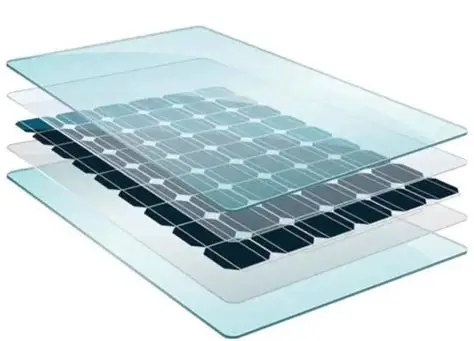
- English
- 简体中文
- Español
- Português
- русский
- Français
- 日本語
- Deutsch
- tiếng Việt
- Italiano
- Nederlands
- ภาษาไทย
- Polski
- 한국어
- Svenska
- magyar
- Malay
- বাংলা ভাষার
- Dansk
- Suomi
- हिन्दी
- Pilipino
- Türkçe
- Gaeilge
- العربية
- Indonesia
- Norsk
- تمل
- český
- ελληνικά
- український
- Javanese
- فارسی
- தமிழ்
- తెలుగు
- नेपाली
- Burmese
- български
- ລາວ
- Latine
- Қазақша
- Euskal
- Azərbaycan
- Slovenský jazyk
- Македонски
- Lietuvos
- Eesti Keel
- Română
- Slovenski
- मराठी
How BASF and SABIC’s Specialty Engineering Plastics Drive Innovation and Reliability in the Photovoltaic Industry
2025-11-24
As the global energy mix shifts towards green and low-carbon sources, the photovoltaic (PV) industry, a mainstay of renewable energy, faces urgent demands for enhanced efficiency, extended lifespan, and expanded application scenarios. Traditional materials are showing limitations in addressing severe environmental challenges and complex design requirements. It is here that the specialty engineering plastics from BASF and SABIC are emerging as a key force, driving innovation and boosting reliability in the PV sector.

1. Addressing Industry Challenges: Material Science Beyond Convention
PV systems are typically expected to operate reliably for over 25 years, enduring harsh conditions including UV radiation, extreme temperatures, humidity, salt mist, and chemical exposure. Concurrently, the rise of distributed PV and Building-Integrated Photovoltaics (BIPV) demands lighter weight, flexibility, and greater design freedom for modules. BASF and SABIC are addressing these core challenges with cutting-edge solutions through their innovative specialty engineering plastics.
2. BASF Engineering Plastics: The Foundation of Robustness and Long-Term Stability
BASF's Ultramid® PA (Polyamide) and Ultradur® PBT (Polybutylene Terephthalate) portfolios are widely proven in demanding PV applications:
• Ultramid® A3WG10 (30% glass fiber reinforced): This polyamide grade offers excellent mechanical strength and stiffness. Its superior resistance to UV aging and low water absorption ensure dimensional stability and mechanical integrity for mounting structures and structural components over long-term outdoor exposure, making it an ideal choice for ensuring the overall structural reliability of power plants.

• Ultradur® PBT: Known for its high heat resistance, outstanding electrical insulation properties, and good chemical resistance, Ultradur® is used in critical components like junction boxes. It effectively prevents electrical tracking, ensures system safety, and its long-term heat resistance guarantees stable performance even in high-temperature environments.
3. SABIC Specialty Compounds: Exemplifying Lightweight Efficiency and Superior Protection
SABIC's product portfolio provides strong support for the lightweighting and specific protection needs of PV systems:
• NORYL™ NHP8000VT3: This material excels in lightweighting. With a density significantly lower than aluminum, it offers high strength and flame retardancy (UL94 V-0), making it highly suitable for lightweight PV racks, inverter housings, and cable management parts, significantly reducing system load and transportation costs.

• LEXAN™ Polycarbonate series: Renowned for its exceptional impact strength, high transparency, and inherent weatherability, LEXAN™ materials provide a lightweight alternative to glass for module backsheets, protective covers, and frames. They not only drastically reduce breakage rates but also offer greater design flexibility for BIPV applications.

4. Collaborative Innovation Shaping the Future
The material solutions from both companies are shaping the future of the PV industry through synergistic effects. For instance, combining BASF's weatherable plastics with SABIC's lightweight, high-strength materials can lead to the development of a new generation of all-plastic mounting systems, offering corrosion resistance, light weight, and ease of installation. For next-generation PV technologies like perovskite, both companies are already advancing higher-performance engineering plastics such as Polyphenylene Sulfide (PPS) and Liquid Crystal Polymer (LCP), which can withstand higher processing temperatures and provide superior gas barrier properties.




